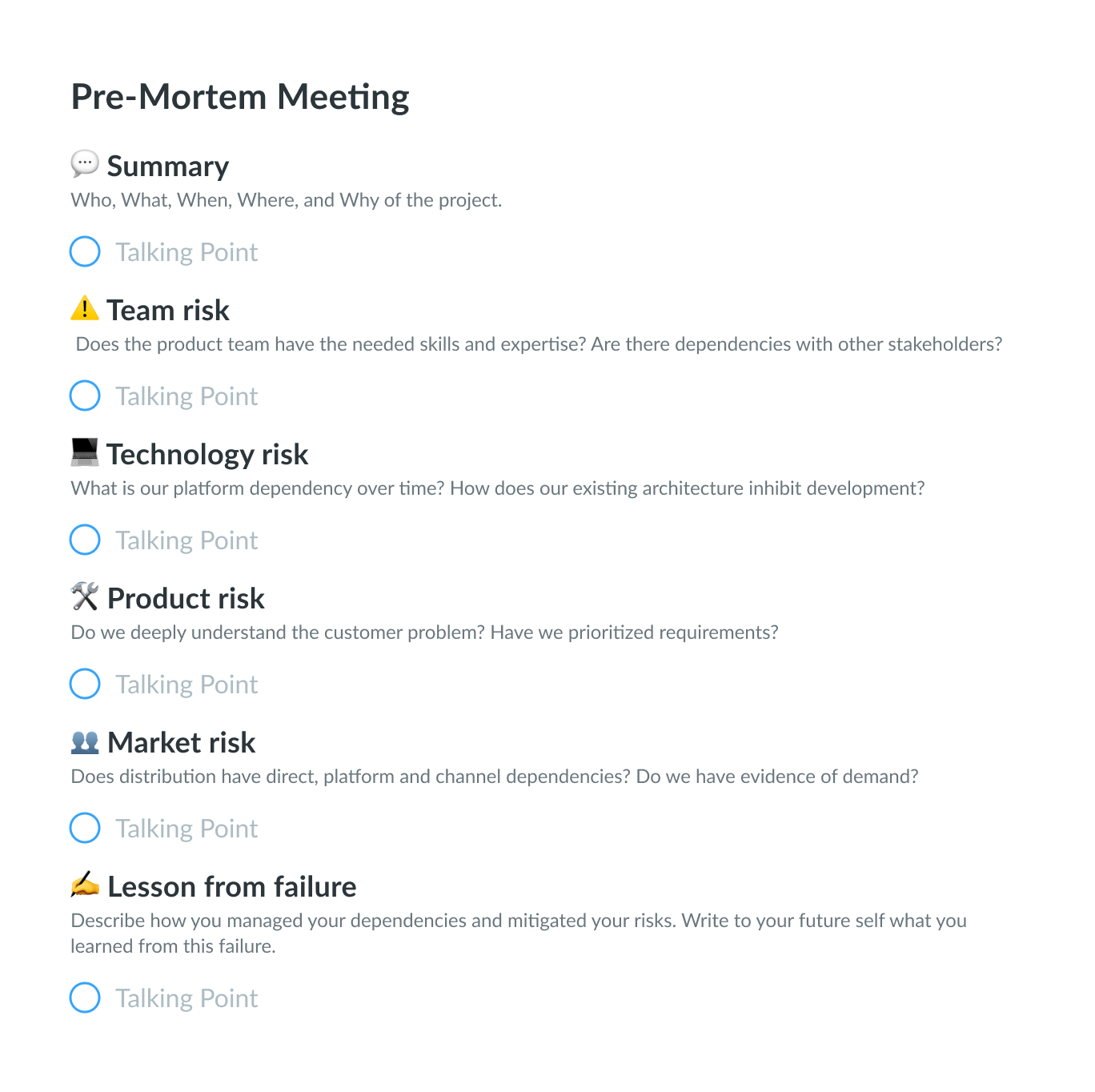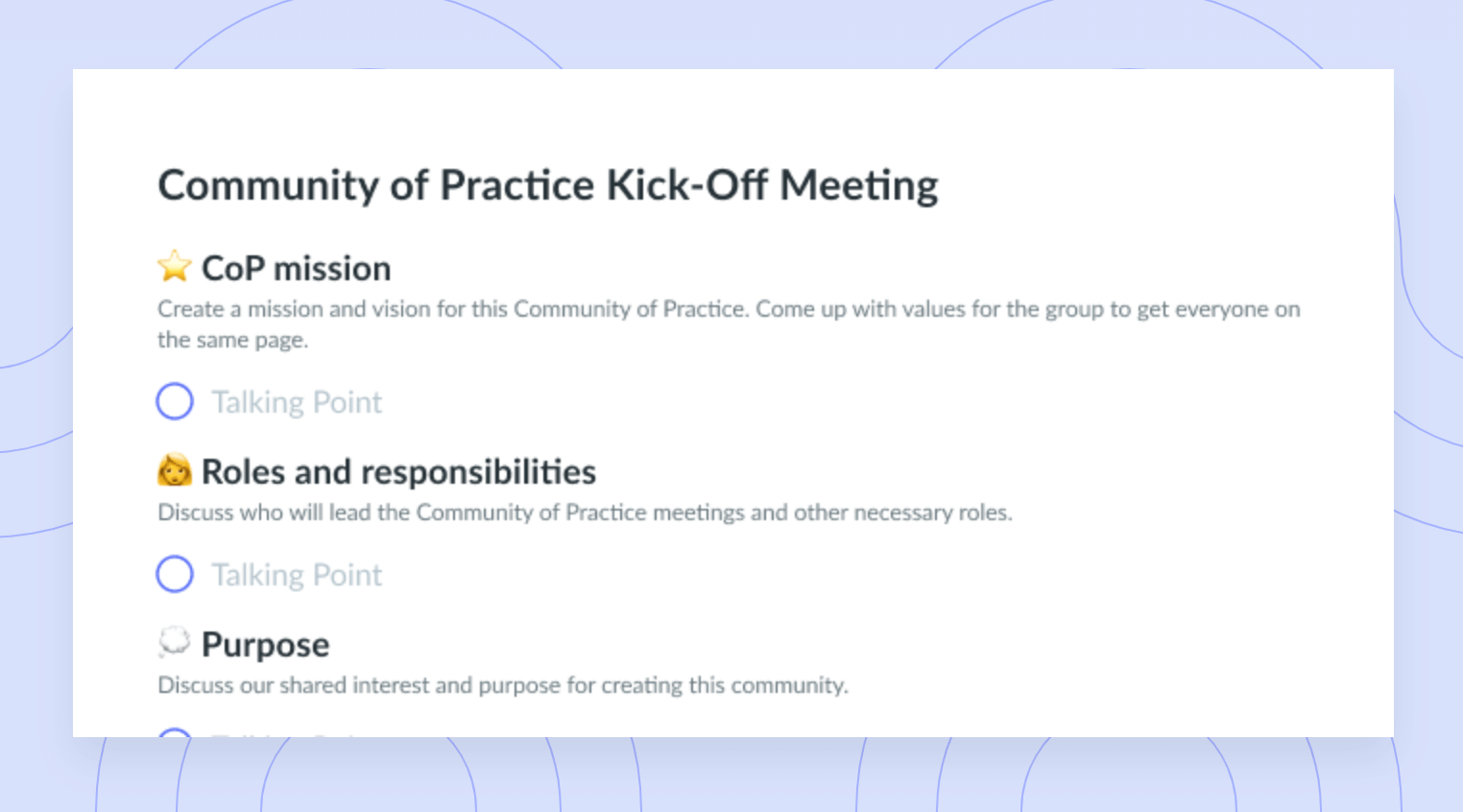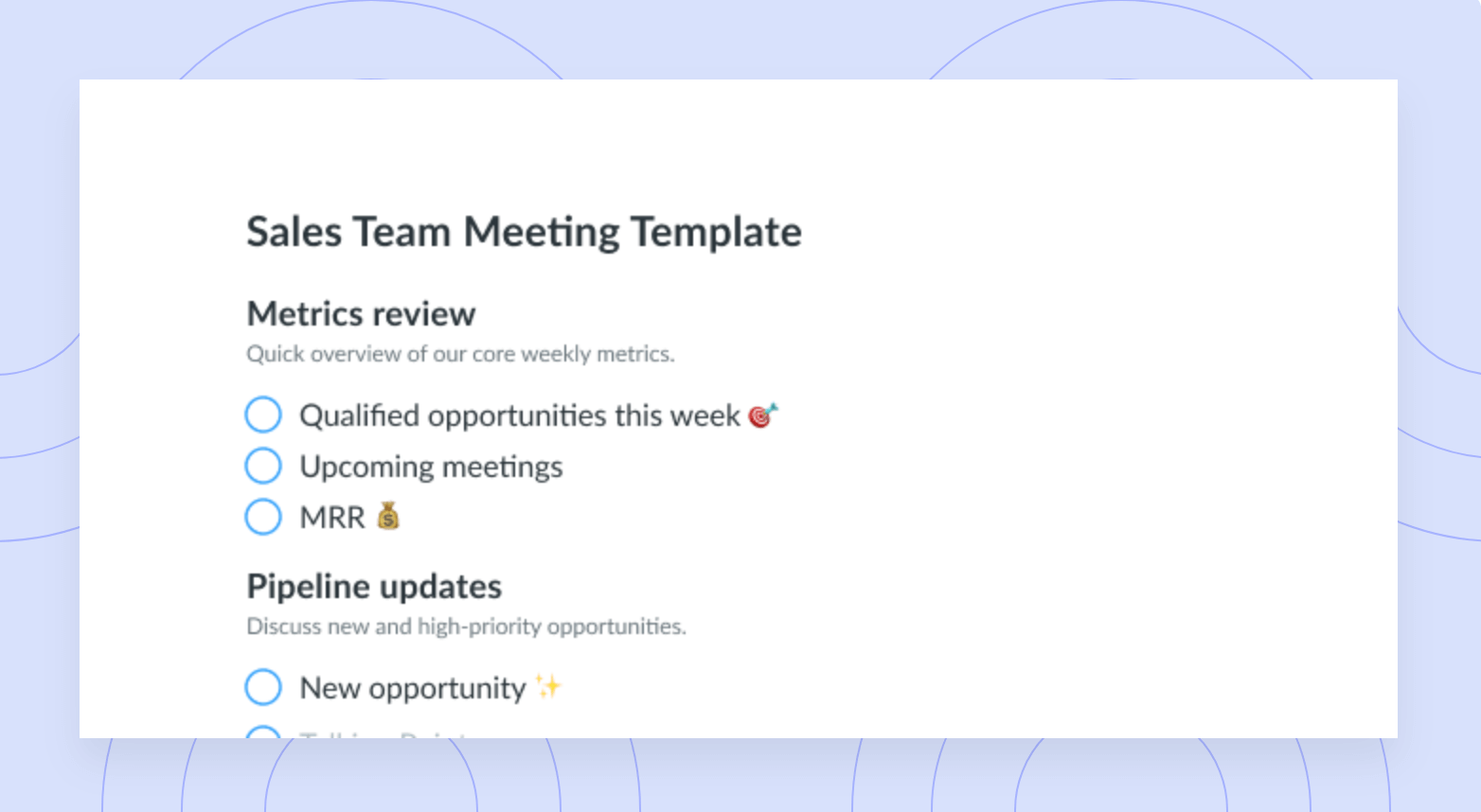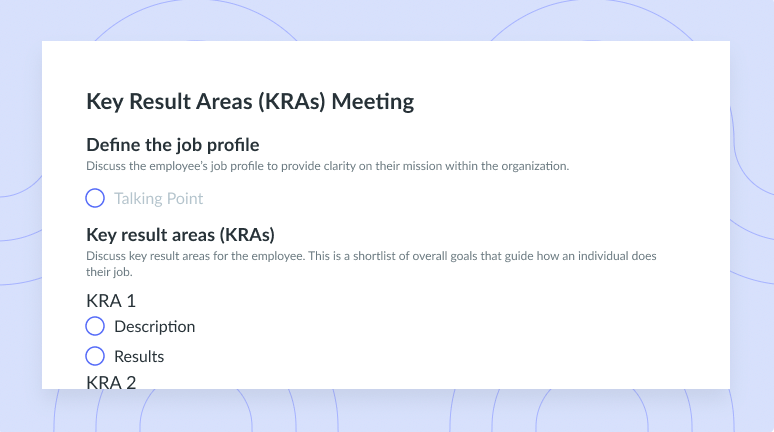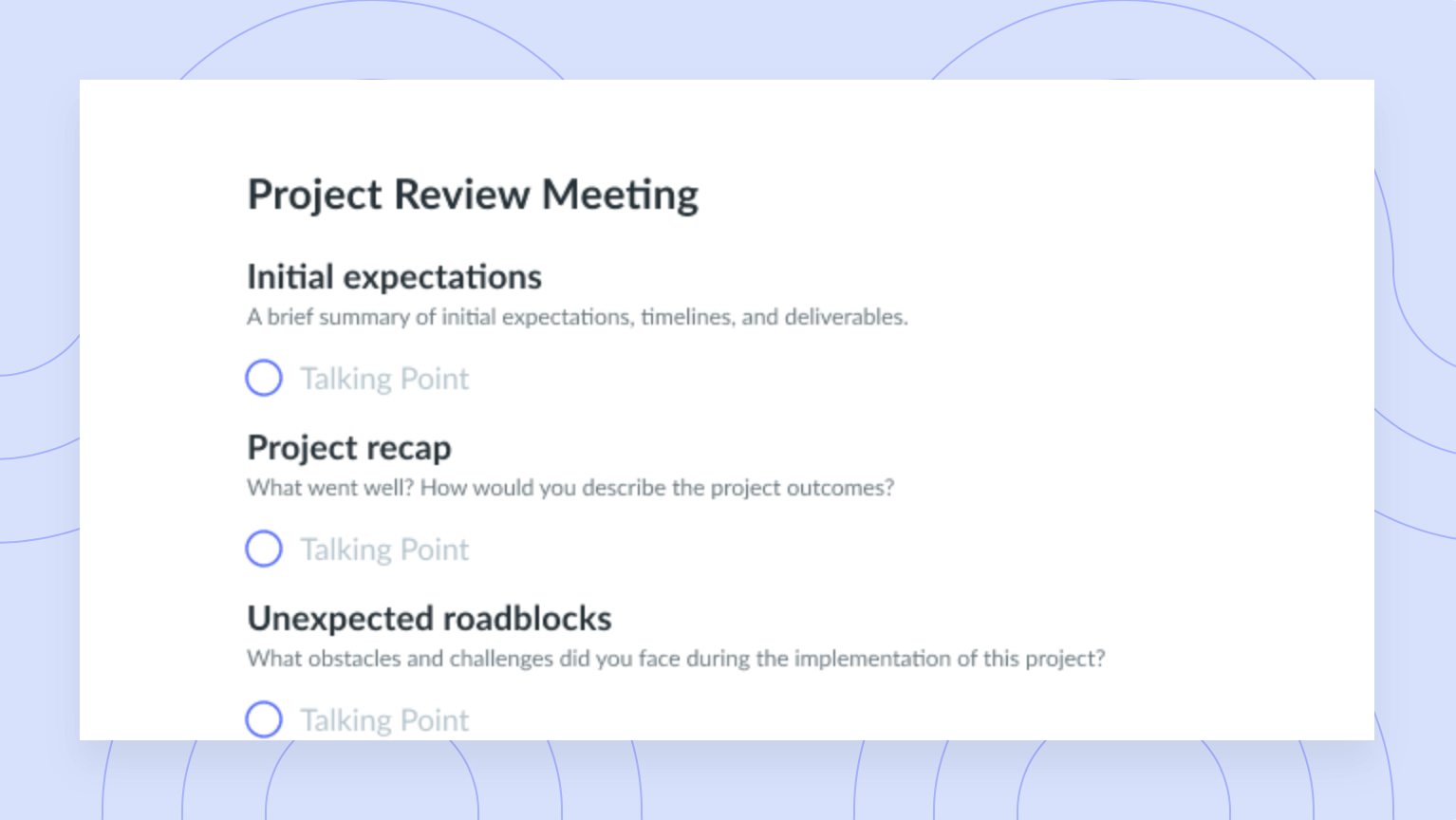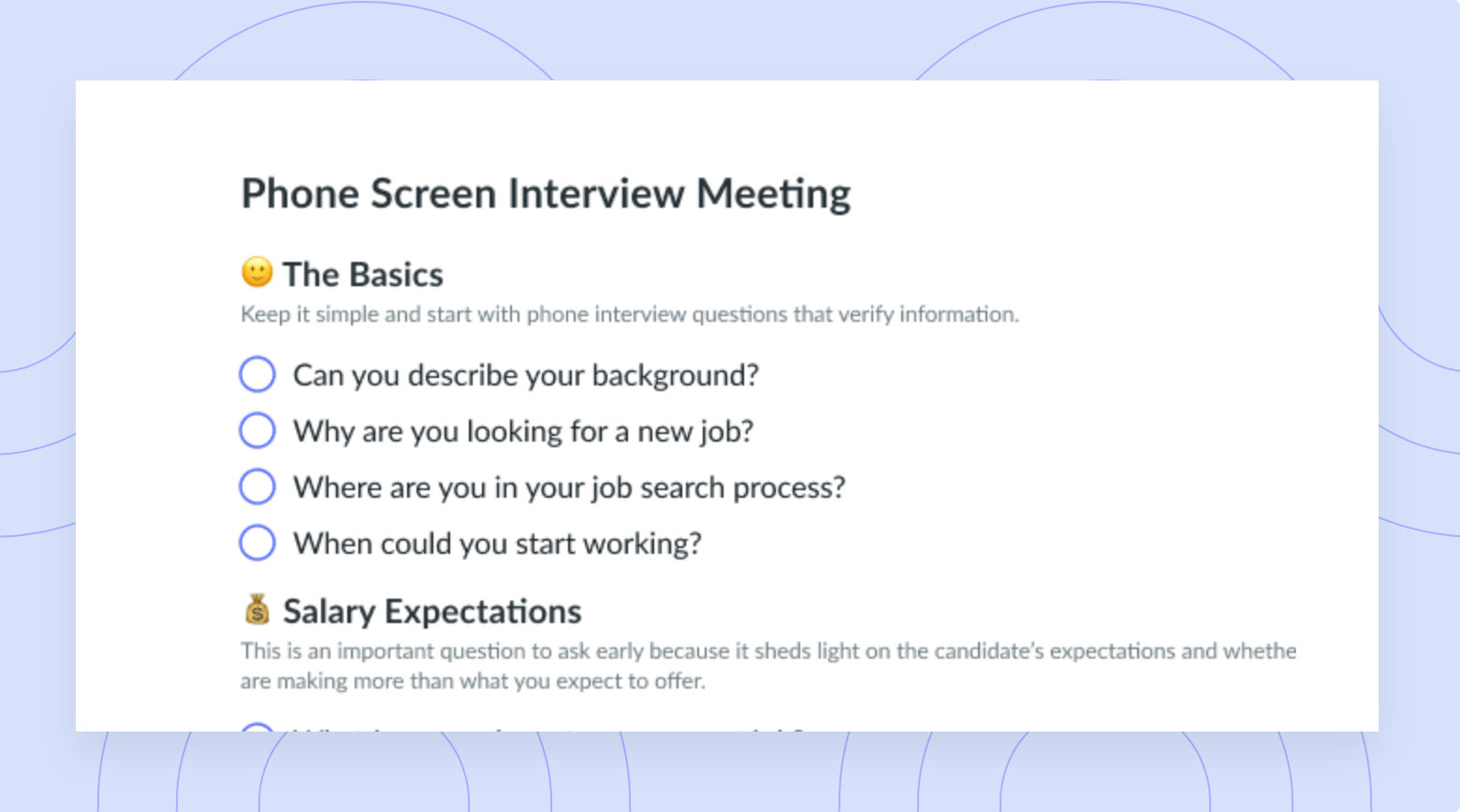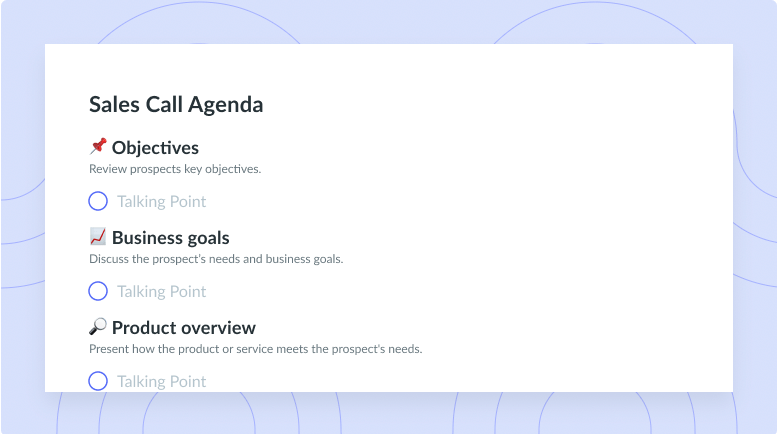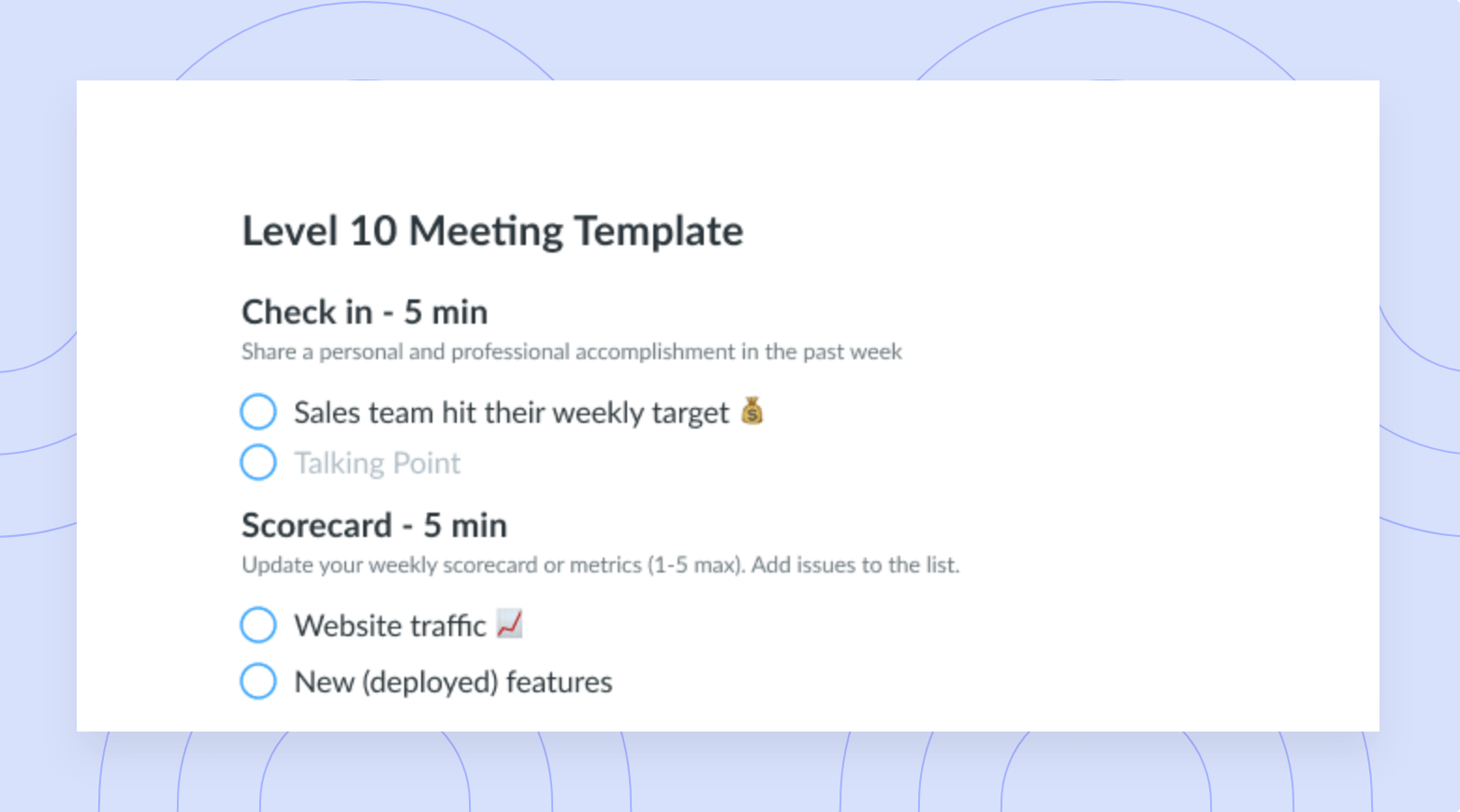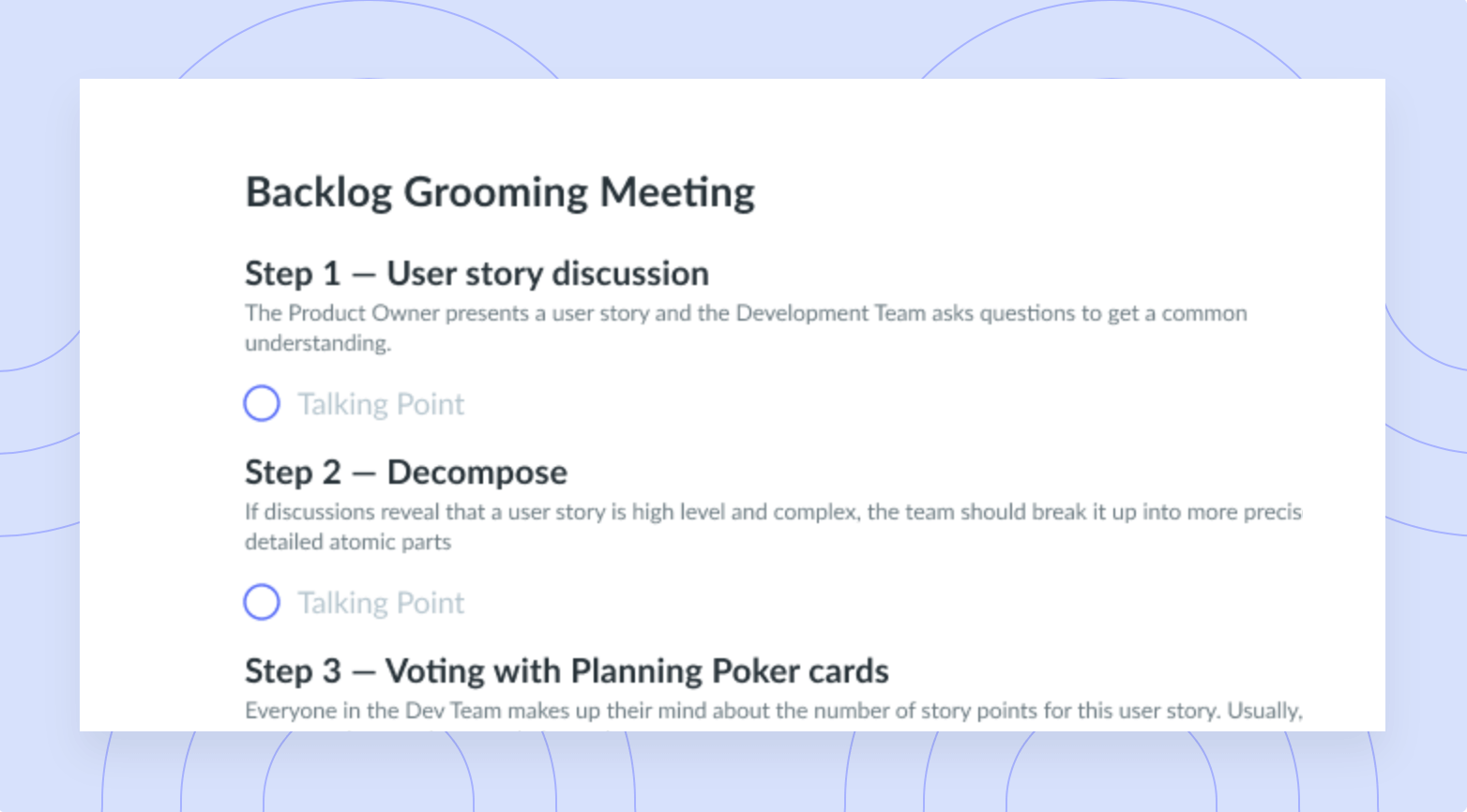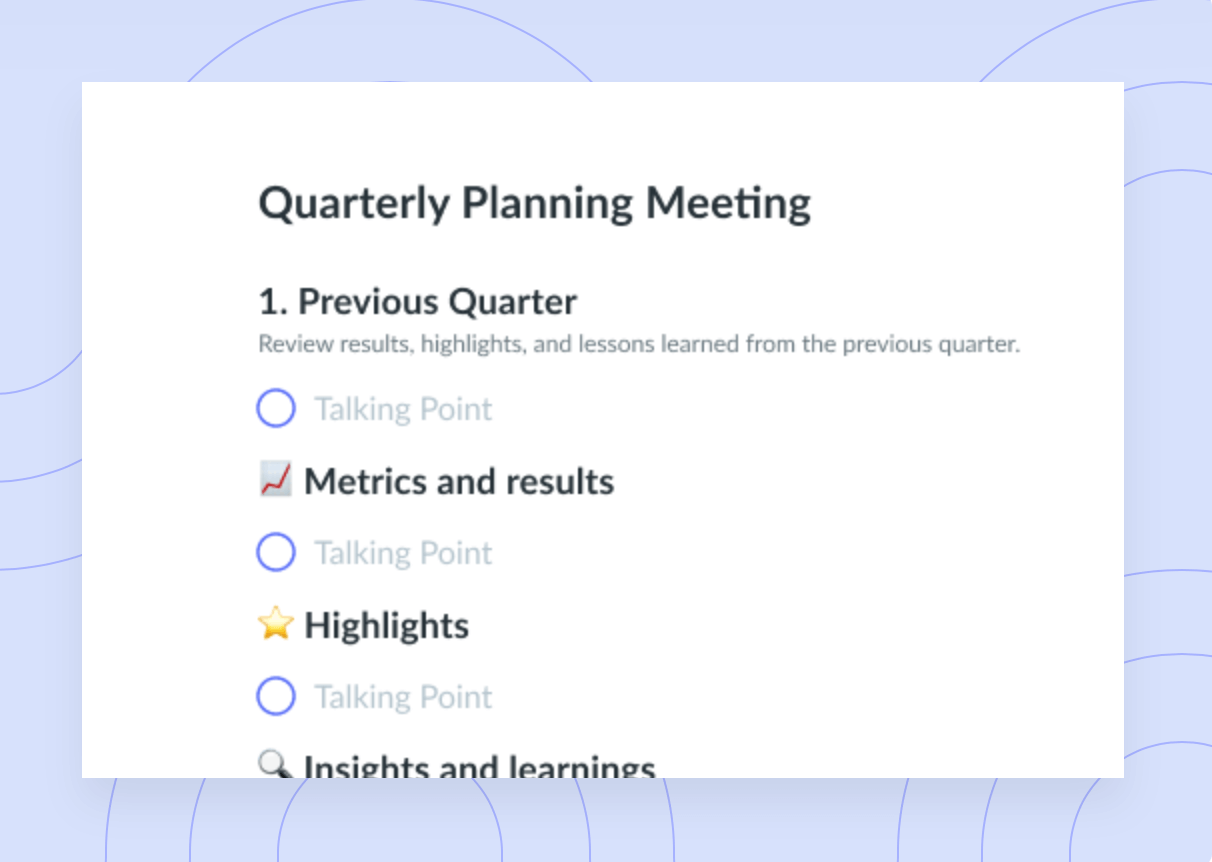
Ross Mayfield: Product Pre-Mortem Meeting Template
Get this templateUse this template to avoid risks and increase the odds of success before you start developing a product.


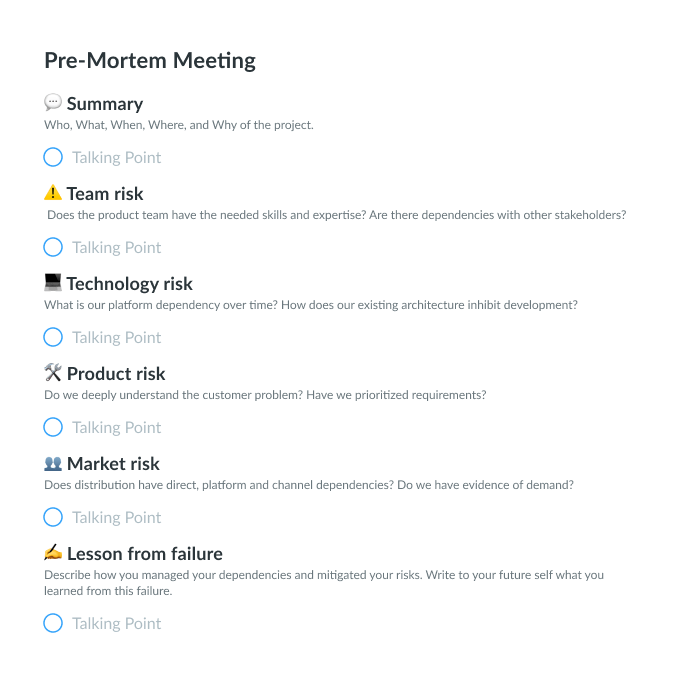

A Pre-Mortem is a meeting before a project starts in which a team imagines what might happen to cause a project to fail. The team then works backward to create a plan to help prevent potential obstacles and increase the chances of success.
Ross Mayfield (Product Lead, Zoom Apps & Integrations at Zoom) has perfected the product pre-mortem, which he describes as “an internal post-mortem written from the outset of developing a product to de-risk failure.”
This backwards approach to product development allows teams to focus on the outcome and value proposition for their customers from the outset of the project, to identify and mitigate potential risks, and uncover desired outcomes. The pre-mortem is typically written in a past-tense voice, reflecting on the successes or failures of the project. When writing your pre-mortem, you should assume it may be read by customers, team members and other stakeholders.
Ross explains that a product pre-mortem should touch on at least four key areas where there’s potential for risk: team, technology, product and market to identify any potential vulnerabilities in the project plan. To help you adopt a pre-mortem approach to your development projects, we’re sharing Ross’s agenda template for Product Pre-Mortem Meetings.
What’s inside this pre-mortem meeting template:
1 Summary
While the summary is the first section of the pre-mortem template it should actually be written last. The summary should take the form of the first paragraph in a news story: describing the Who, What, When, Where, and Why of the project. The last sentence of the summary should summarize the lessons learned through initial failure.
2 Team risk
The second section of the pre-mortem template focuses on team risk. This section should address whether the product team has the skills and expertise to effectively deliver the project, and determine if it’s necessary to recruit new team members to the development team or provide new learning opportunities for the existing team to ensure the right expertise is available for success. The team risk section of the pre-mortem should also include any dependencies with stakeholders, and the whether or not the organizational culture fits the development opportunity.
3 Technology risk
The third section of the pre-mortem template provides insights into the potential technology risks associated with the development project. This includes details on whether the product’s success depends on additional research and development, the potential of existing architecture to inhibit development, and the platform for future dependencies.
4 Product risk
Following an assessment of the technology risks, the fourth section of the pre-mortem addresses any existing or potential product risks. The primary question this section aims to answer is whether there is a deep understanding of the customer and if the customer is well-defined. This phase of the pre-mortem also addresses the necessary financial and other resources necessary to adequately deliver the project, and what, if any, dependencies associated with the product.
5 Market risk
The next section of the pre-mortem reviews any marketing risks associated with the development project. The market risk discussion addresses the product distribution platforms, channels and dependencies, while also determining the current market environment and readiness for the proposed product. Lastly, this section addresses the potential short and long-term competitive risks associated with the product.
6 Lesson from failure
The last section of the pre-mortem template addresses the lessons learned from product failures, including how dependencies were managed and risks were mitigated. This section often takes the form of recommendations for future development, including things that the development team wishes they had done differently, so that they can do so in the future.
Pre-mortem meetings are a great tool for project managers and development teams to determine the risk and rewards associated with various development projects, and create a feedback loop for continuous improvement. Although many project teams engage in pre-launch risk analysis, the pre-mortem hindsight approach offers many benefits that other methods don’t.
Research conducted in 1989 by Deborah J. Mitchell, of the Wharton School; Jay Russo, of Cornell; and Nancy Pennington, of the University of Colorado, found that prospective hindsight—imagining that an event has already occurred—increases the ability to correctly identify reasons for future outcomes by 30 percent. The pre-mortem exercise also allows the development team to pick up early signs of trouble once the project gets under way, and potentially avoid the need for a painful postmortem.
We hope Ross Mayfield’s template helps your development team effectively adopt project pre-mortem meetings to improve the success rate of your current and future development projects.

